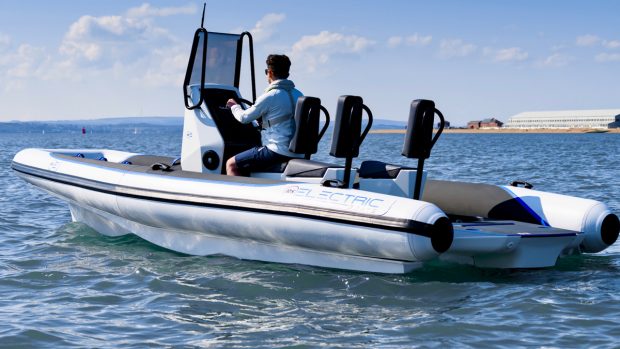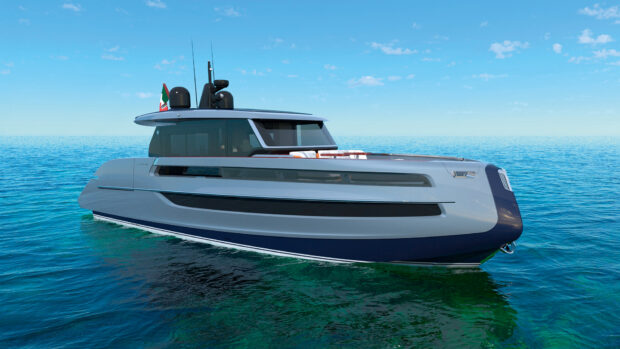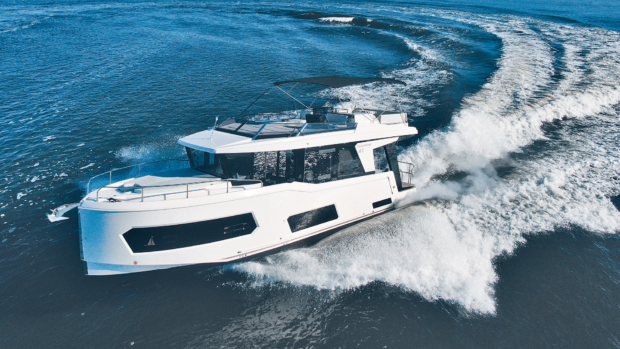The Egret crew answer a questions on yesterday's storm
Position: S41 54.12 W61 51.50
Course: 219 degrees M
Distance traveled from Gibraltar 5911.28
Conditions: Seas 5′-6′ off starboard bow
Scott and Mary Flanders left Gibraltar on 16 September, and we’ll be following their journey every step of the way, thanks to this unique online “blog”. For the first instalment of their diary, click here
Egret had a calm night with building seas since daybreak. Winds steady 22-26 knots until recently. We changed our slight dog leg waypoint off Peninsula Valdez to a straight line before our turn in point for Caleta Hornos (do not confuse this with Cape Horn….BIG difference) putting the seas further back off the bow and a more comfortable ride. We picked up a few miles as wel,l trying very hard to make our anchorage in the most light possible. With the head seas Egret’s speed has been falling. Our current speed is 6.4 knots.
Egret has one planned stop between Mar Del Plata and Usuhuia, Argentina, at the bottom of the SA peninsula. This stop is Caleta Hornos, about a day’s run south of Peninsula Valdez. Caleta Hornos is a ‘bombproof’ anchorage as described in the Patagonia cruising guide. It is a very narrow fiord with high cliffs surrounding the anchorage. There is room for several boats to anchor by taking two lines ashore. We hope to meet two of our Mar Del Plata sailboat buddies who left the day before Egret. We planned this stop to go hiking and picture taking. This will be our first chance to see penguins and sea otters. Another good reason to stop is there is a 974.1 MB low south of us. Yesterday Egret passed another milestone. We entered the ‘roaring forties’.
Yesterday and today we have been cruising by large groups of young albatrosses being shepherded by their elders. At times small groups of four to six youths will be flying in formation with one or two parents cartwheeling among the waves. The large wingspan mature birds are in singles and pairs with no youths. The parents are probably wondering how their offspring will fare. Sound familiar? Watching the sea birds is part of our daily entertainment. Floating on the ocean they look like giant sea gulls. In flight they are beautiful birds not only in appearance but also in their freedom to go where they want, when they want. They have no predictable flight pattern. Long distance cruisers share some of those traits but are a bit less graceful.
NAR buddy Braun Jones on Grey Pearl receives a direct copy of Voyage of Egret. Braun is a hands on guy that likes details. He sent a list of questions about Egret’s eight one knots of wind. More of you may have the same questions so I will include Braun’s list of questions and Egret’s reply below.
1. How much did Egret heel and for how long?
We didn’t heel much at all. It was on the nose. THAT is the whole key. If it hit us on the beam with our big top it would have knocked us to 40 degrees or so until we could round up.
2. What are the details of the “huge difference” between 60-80 knots?
When the wind went to 60 knots it was bad. The pressure difference between 60 and 80 is huge. When the wind dropped to 60 from 80 it seemed not that bad. When it dropped to 40 I left the helm to finish the e-mail. In the rare occasions we are in 35 knots at sea it is usually in big seas and has been blowing for a while like your Egypt-Crete trip. Except for a few gusts now and then we have never had 40 knots sustained. I was told by the Mar Del Plata fisherman just the day before in very heavy wind gusts, not sustained, the waves are small? the rest blown away by the wind. I had my doubts but now know he is right on.
3. What was visibility? Water blowing everywhere? Blinding you?
When the front hit the 6-8′ waves were on the stern quarter. Until they got blown away there was heavy spray but no real loss of visibility. After the wind established direction the waves were very low. The water was opaque white from spray but it did not lift very high. Fortunately it hit in late afternoon and not at night.
4. Nothing tore loose? Dingy cover?
We only lost what we reported, our yellow ribbon. The dinghy cover was protected somewhat by the flybridge and the venturi windshield. When in Rome we added 4 extra tie-down grommets per side to the dinghy cover. It didn’t budge. The fenders were lifted by vacuum from behind the Portuguese bridge and sailed down the starboard side walkway. It makes a great case to have everything secured, even though the forecast is for 25 knots or less for this three-day run.
5. How was your ability to make way, and the direction of travel vs the direction of wind?
We still made way but how much I don’t know. We reduced RPM from 1700 to 1550. I was standing by the wheel to manually take control and didn’t look at the GPS. The autopilot held us on course. Again the whole key is the wind was directly from our course of travel. It was like a Lucky Jack Aubry 1800’s sea battle. A lot happens in a short time with a lot of detail!








